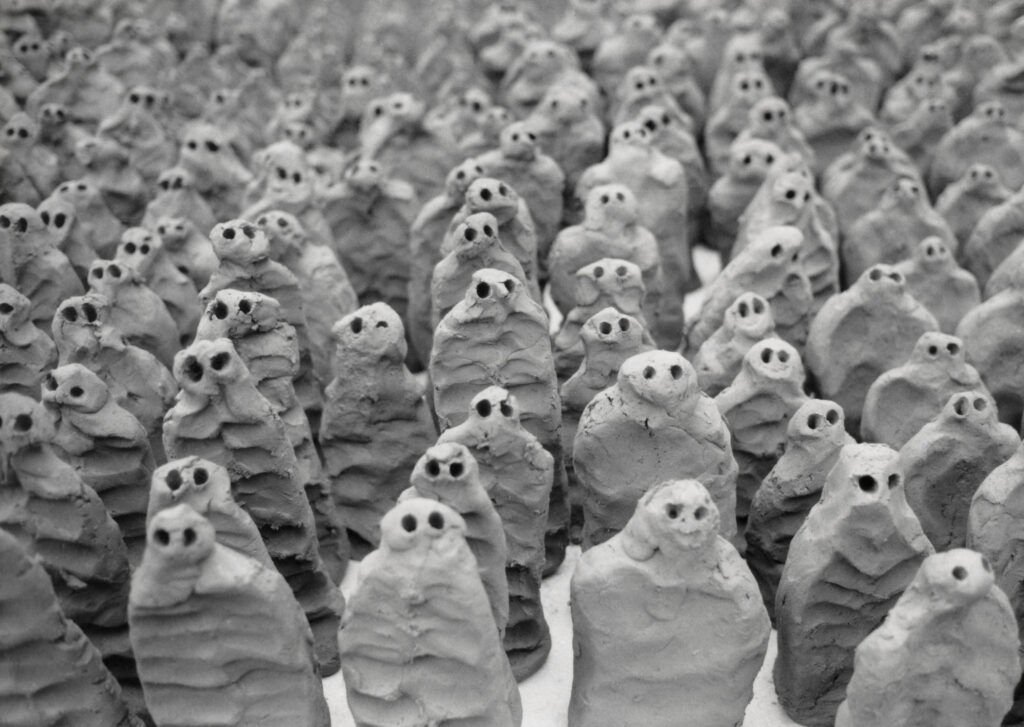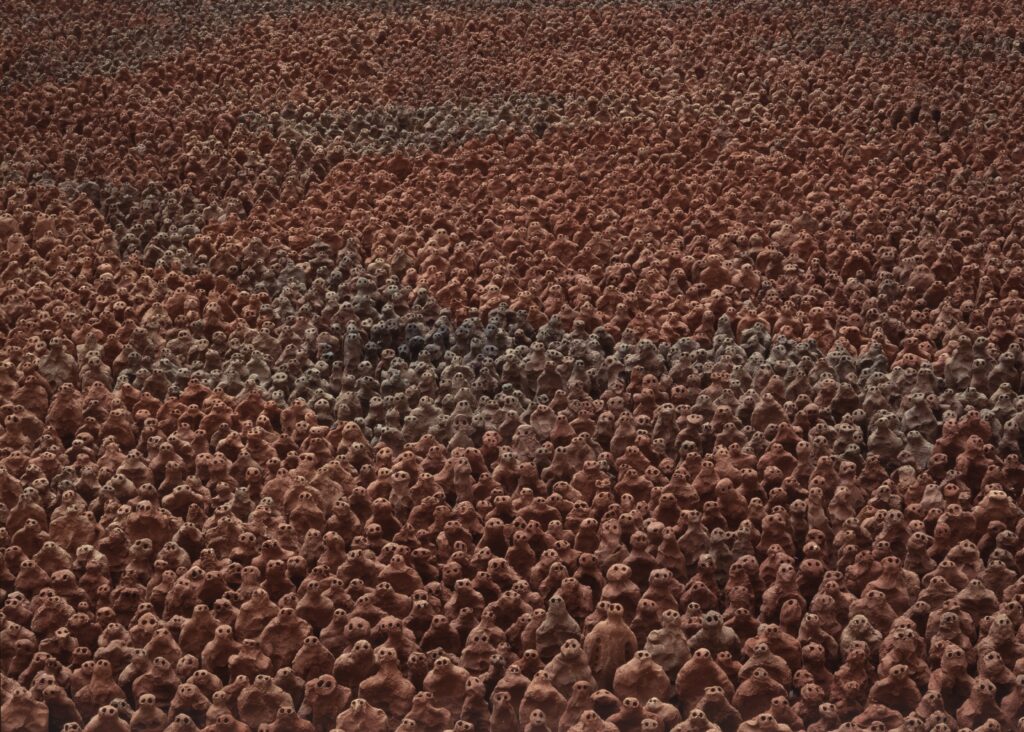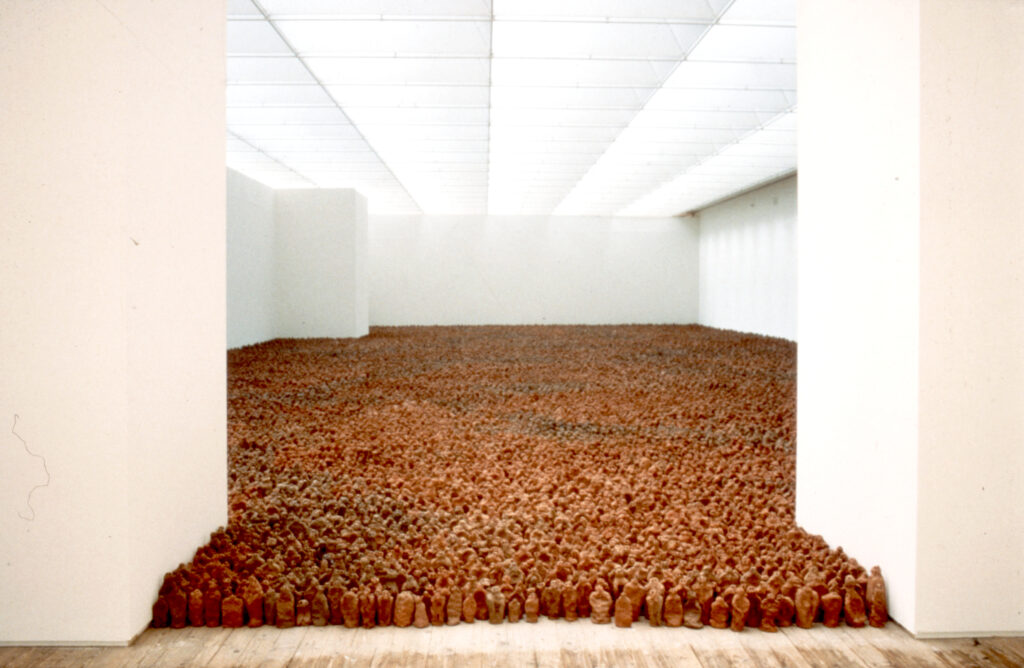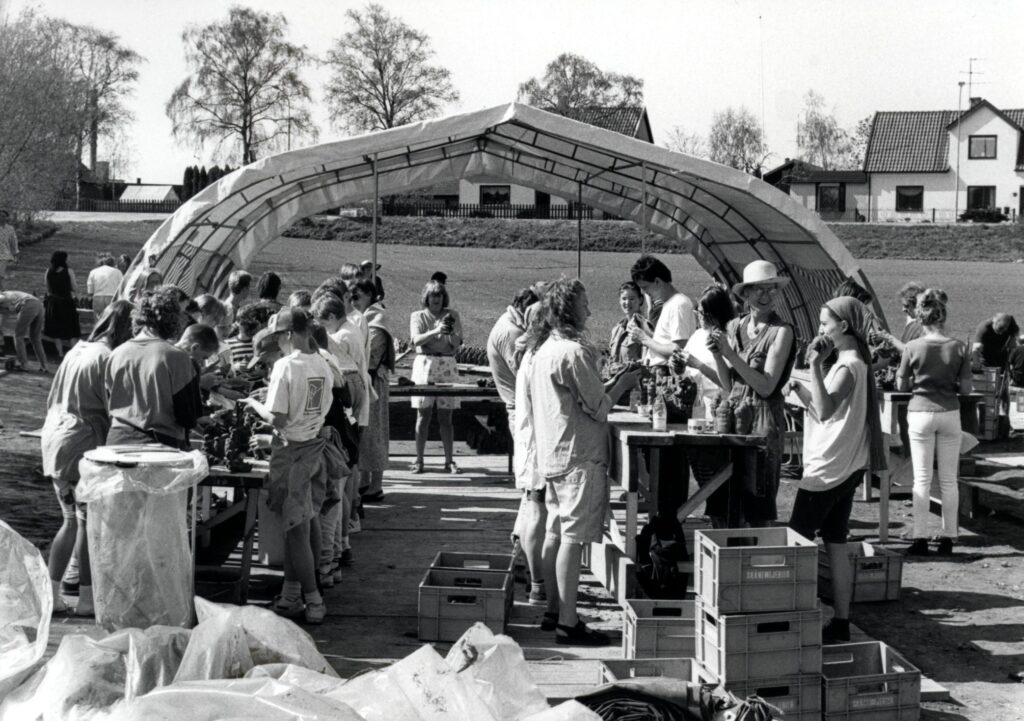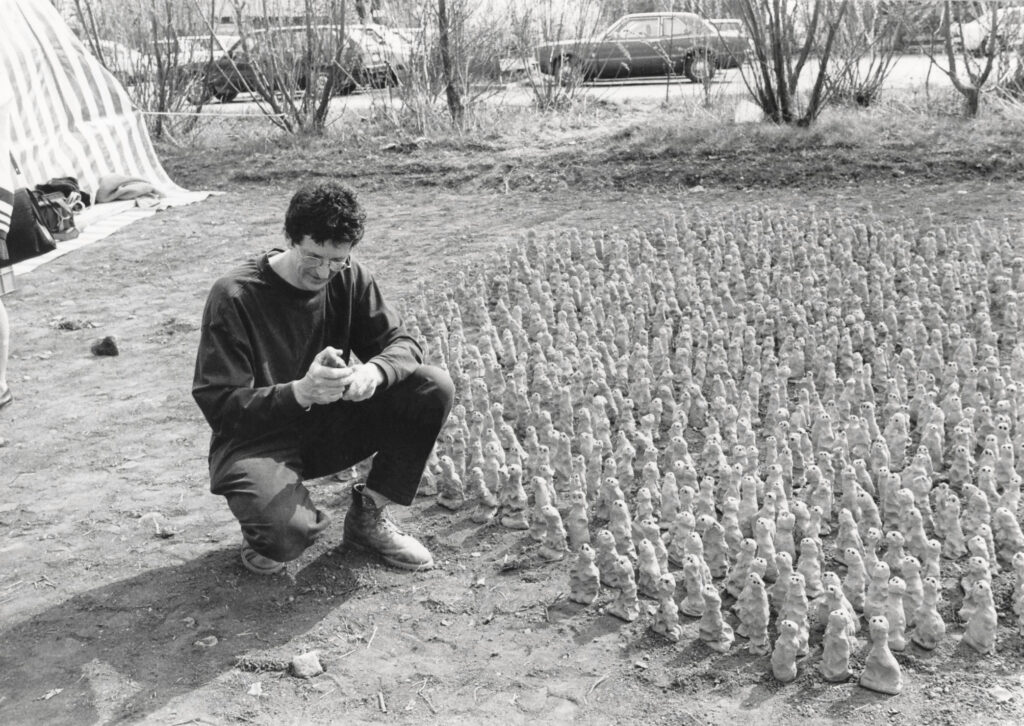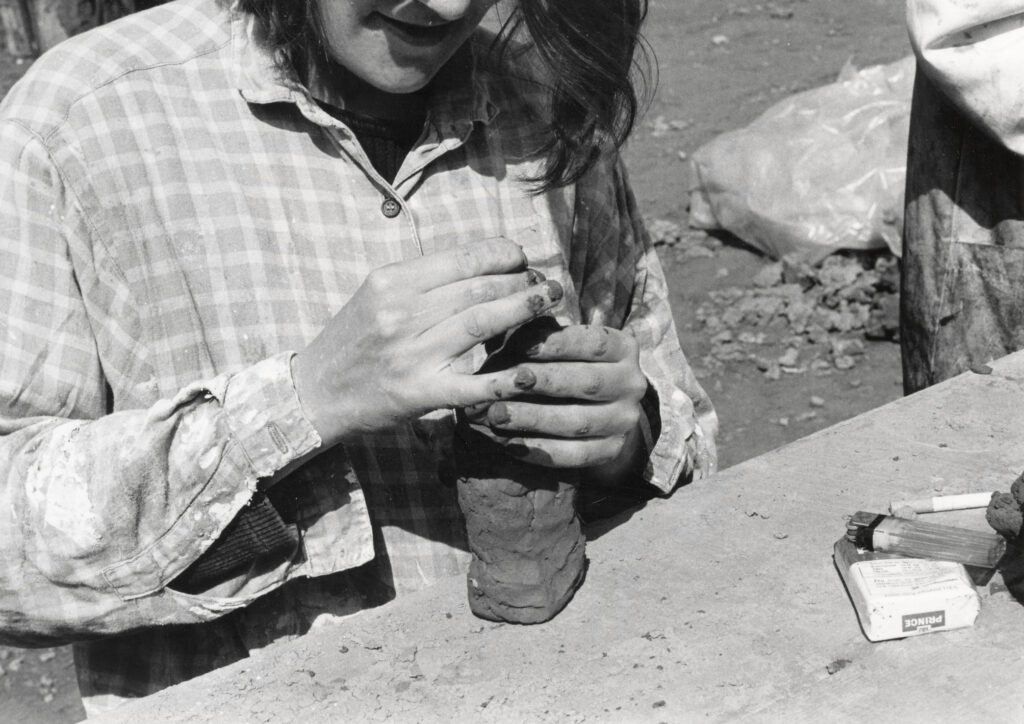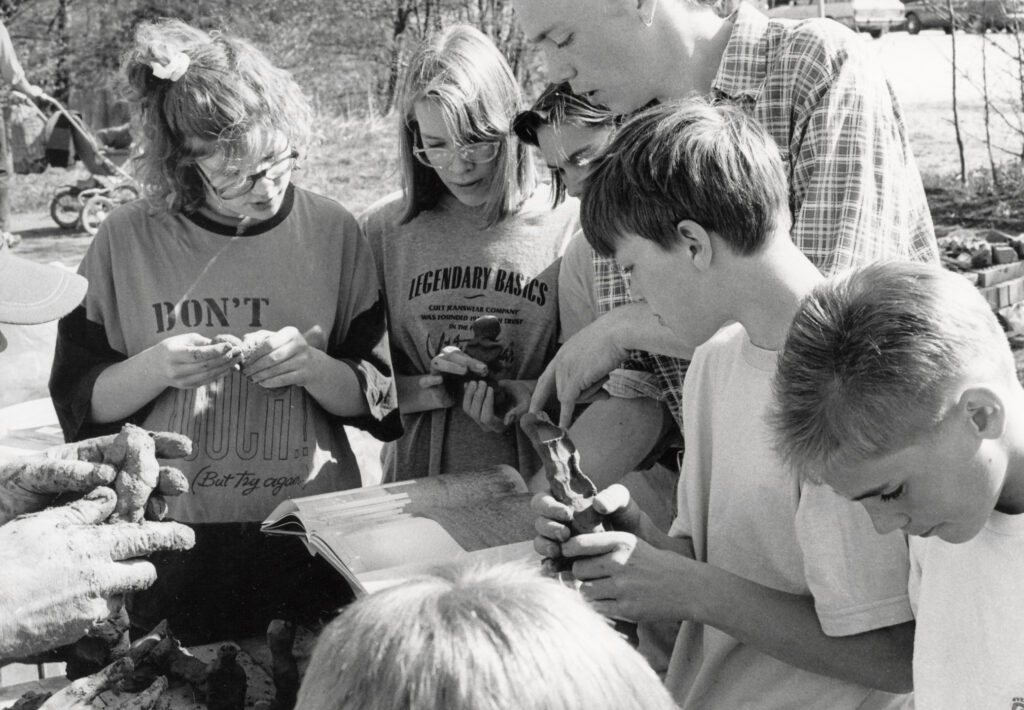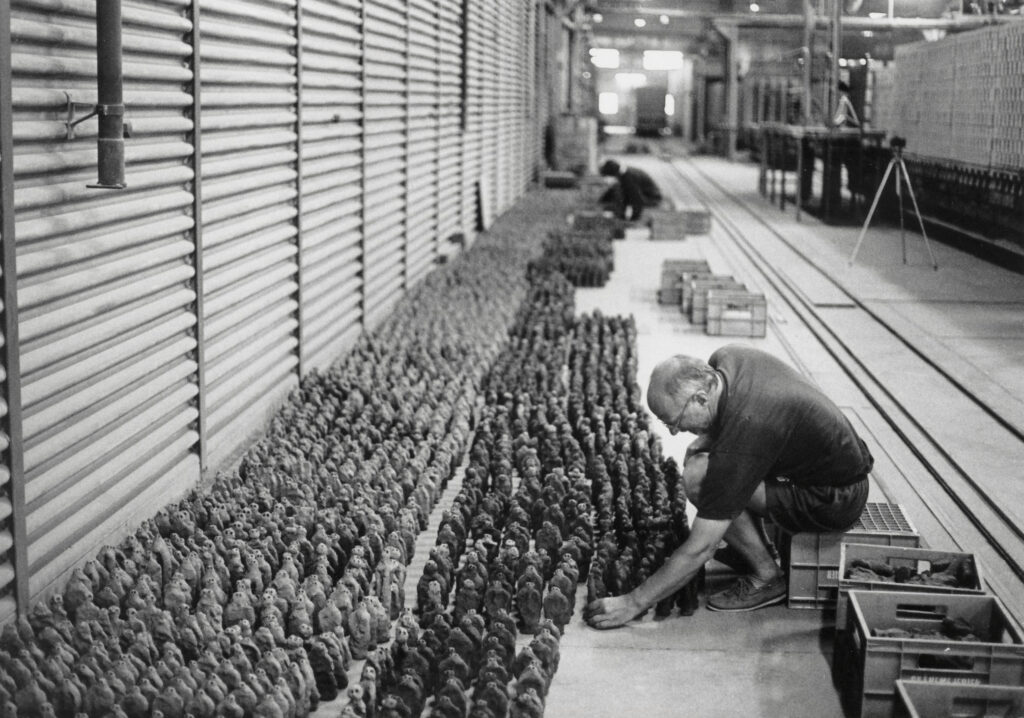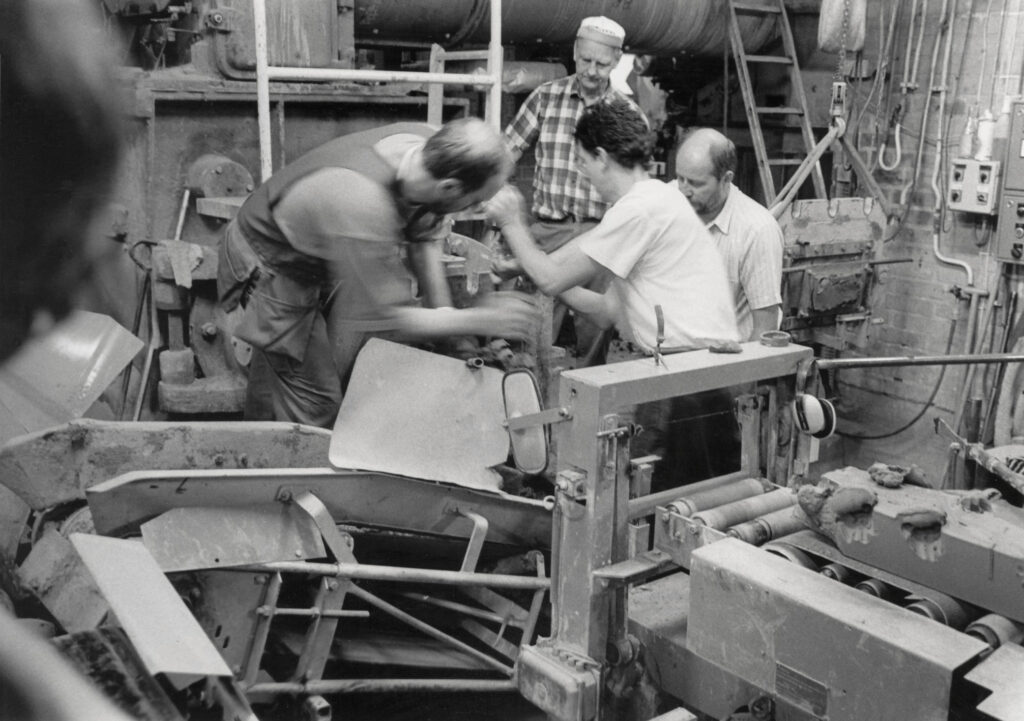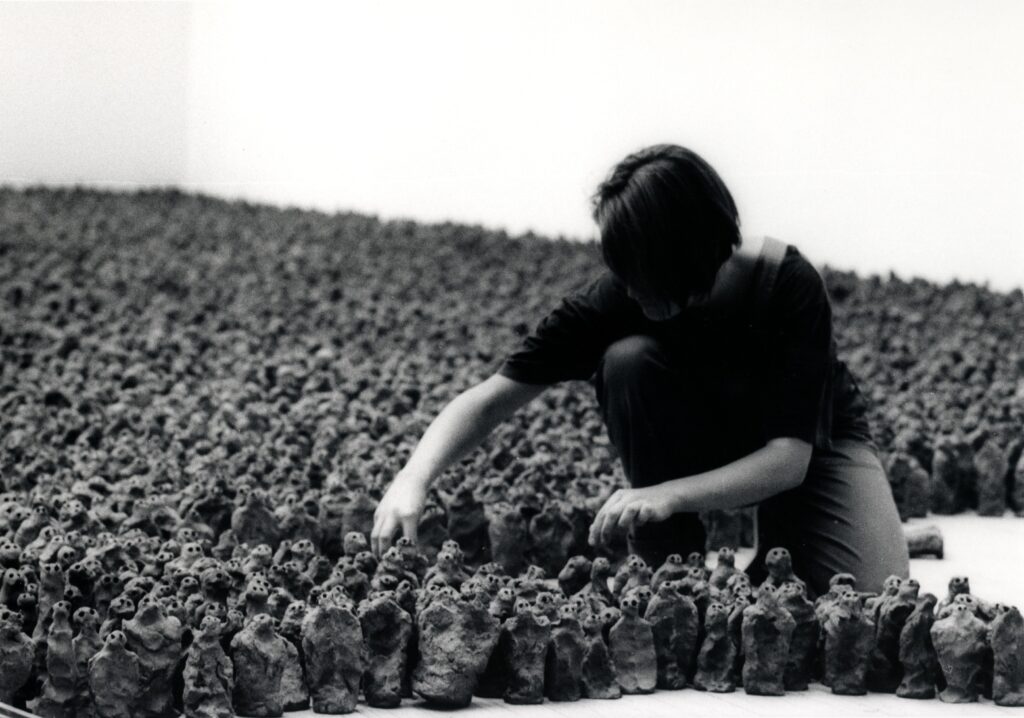
Antony Gormley – Sculptures and installation
18.9 1993 – 31.10 1993
As early as the spring of 1993, preparations began for Antony Gormley’s exhibition at Malmö Konsthall. A total of 40,000 hand-sized clay figures were produced in collaboration with Östra Grevie Folk High School and three local brickworks. When installed across the floor of the Konsthall, this astonishing number of individually crafted figures formed a dominant element of the exhibition: a field of humanlike yet enigmatic beings titled The European Field.
Equally striking was a series of large, swollen cast iron sculptures shown by Gormley for the first time in Malmö. Two were suspended from the ceiling, one placed just inside the entrance, and another positioned outside the Konsthall. These heavy, expanding forms—based on the artist’s own body—also embodied the surrounding “space of life,” made tangible in iron.
It was in India that Antony Gormley became an artist. He lived there for three years to study meditation under the teacher S.N. Goenka. This practice centres human consciousness in a timeless experience of the self within the body. When Gormley returned to his native England (born 1950 in Hampstead), it was during a period when debates about art were largely focused on language and on which conceptual detour led most appropriately to art. It is perhaps not surprising, then, that his commitment to corporeality and to sculpture’s physically grounded means of expression drew immediate attention.
Gormley achieved international recognition with his hollow lead sculptures—casts of his own body placed in various exposed positions. He participated in the seventh Documenta in Kassel in 1982 with these works. They appeared closed off, shielded by a resistant outer shell, yet at the same time exposed and vulnerable—both meditative and confrontational. A number of these lead sculptures were included in this, the most comprehensive exhibition of Gormley’s work to date, along with a selection of later cement sculptures in which the body is entirely encased in solid form.
